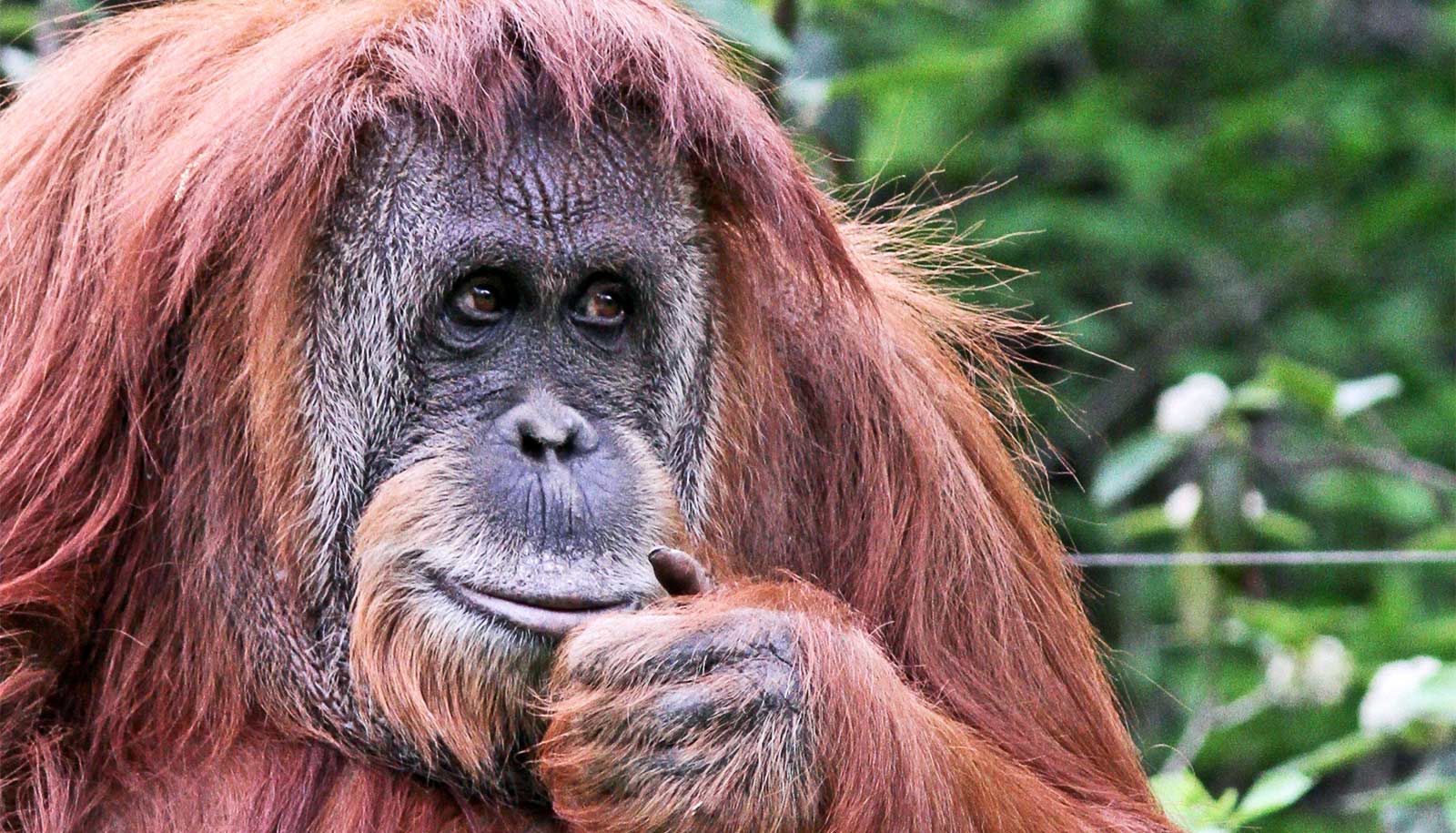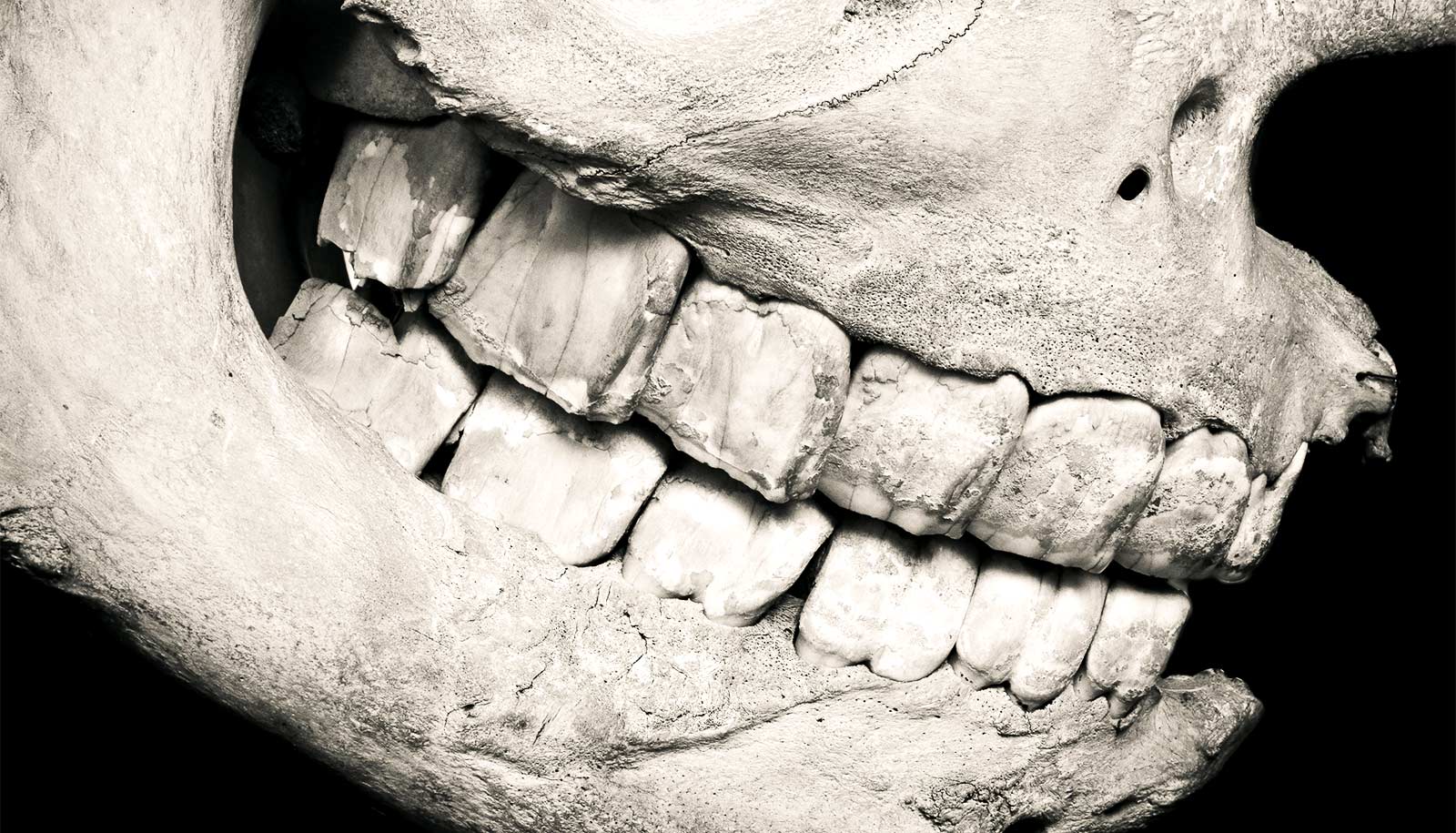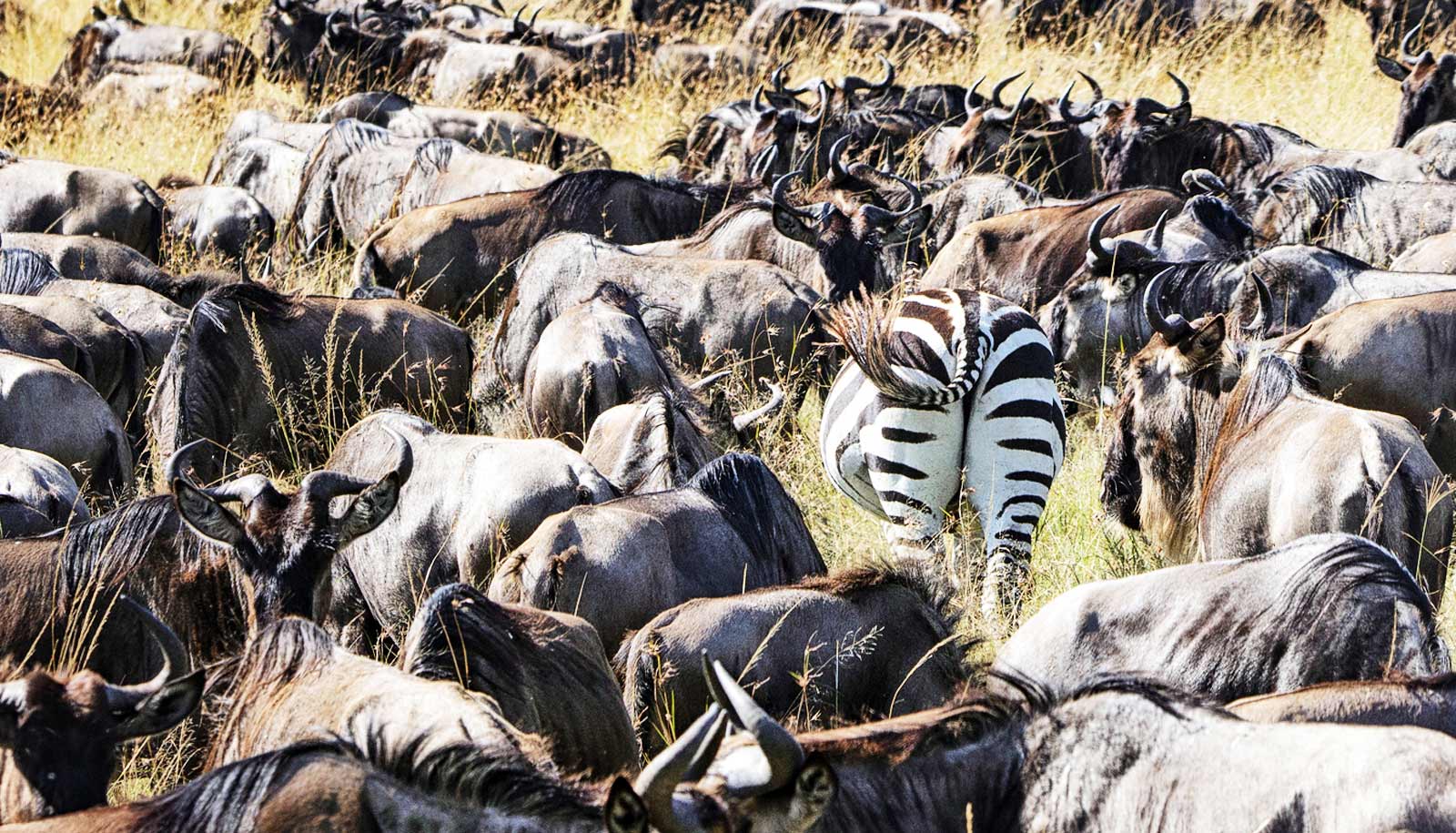Researchers have used ancient protein sequencing to retrieve genetic information from a 1.9-million-year-old, extinct, giant primate that used to live in a subtropical area in southern China.
The genetic information allowed the researchers to uncover the evolutionary position of Gigantopithecus blacki, a primate that stood almost 10-feet tall (3 meters) and weighed up to 322 pounds (600 kg), revealing the orangutan as its closest, living relative.
It is the first time that researchers have retrieved genetic material this old from a warm, humid environment.
“Primates are relatively close to humans, evolutionary speaking. With this study, we show that we can use protein sequencing to retrieve ancient genetic information from primates living in subtropical areas even when the fossil is two million years old,” says Frido Welker, postdoc at the Globe Institute at the Faculty of Health and Medical Sciences at the University of Copenhagen and first author of the study, published in Nature.
“Until now, it has only been possible to retrieve genetic information from up to 10,000-year-old fossils in warm, humid areas. This is interesting, because ancient remains of the supposed ancestors of our species, Homo sapiens, are also mainly found in subtropical areas, particularly for the early part of human evolution. This means that we can potentially retrieve similar information on the evolutionary line leading to humans.”
Discovery in teeth
Today, scientists know that human and chimpanzee lineages split around seven or eight million years ago. With the previous methodologies, however, researchers could only retrieve human genetic information more recent than 400,000 years old.
The new results show the possibility of extending the genetic reconstruction of the evolutionary relationships between our species and extinct ones further back in time, at least up to two million years—covering a much larger portion of human evolution.
In another recent study, also published in Nature, Enrico Cappellini, associate professor at the Globe Institute and senior author of the new study, demonstrated the massive potential of ancient protein sequencing.

“By sequencing proteins retrieved from dental enamel about two million years old, we showed it is possible to confidently reconstruct the evolutionary relationships of animal species that went extinct too far away in time for their DNA to survive till now. In this study, we can even conclude that the lineages of orangutan and Gigantopithecus split up about 12 million years ago,” Cappellini says.
To make sequencing two-million-year-old protein remains possible, researchers stretched mass spectrometry, the technology at the base of proteomic discovery, to the limit.
Orangutan relative
Researchers initially discovered the fossil evidence—currently limited to just a few lower jaws and lots of teeth—attributed to Gigantopithecus in southern China in 1935. Researchers have not yet found a complete skull or other bones from the rest of the skeleton, which has led to a lot of speculation about the physical appearance of this mysterious animal.
“Previous attempts to understand which could be the living organism most similar to Gigantopithecus could only be based on the comparison of the shape of the fossils with skeletal reference material from living great apes,” says Cappellini.
“Ancient DNA analysis was not an option, because Gigantopithecus went extinct approximately 300,000 years ago, and in the geographic area Gigantopithecus occupied no DNA older than approximately 10,000 years has been retrieved so far. Accordingly, we decided to sequence dental enamel proteins to reconstruct its evolutionary relation with living great apes, and we found that orangutan is Gigantopithecus‘ closest living relative.”
Additional researchers from Novo Nordisk Foundation Center for Protein Research. Villum Fonden, the Novo Nordisk Foundation, and the Marie Sklowowska-Curie Actions Individual Fellowship and International Training Network programs funded the work.
Source: University of Copenhagen



